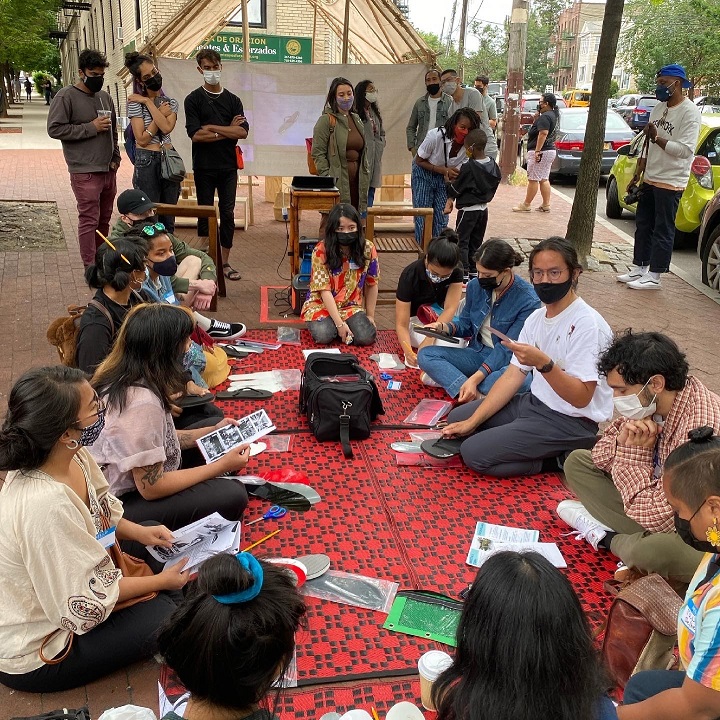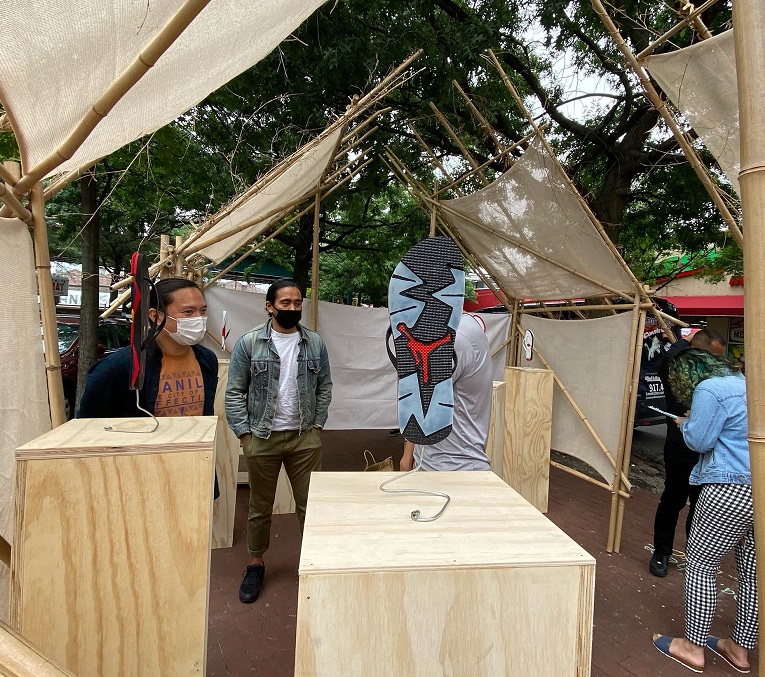Tsinelas-making workshop, a sharing of personal journeys

“Oras Na,” an art installation and workshop led by artist Karl Orozco, was held on June 12 at the Little Manila neighborhood of Woodside, Queens, to celebrate Philippine Independence Day. The event was hosted by Little Manila Queens Bayanihan Arts.
Orozco led three Tsinelas-making workshops, where participants customized the Tsinelas, which means “slippers” in Tagalog.
Explained the artist, “The title of this project is ‘Oras Na’ takes its name from the labor union in Marikina that formed about the 1930s. They were shoemakers that were organizing feeling squeezed by foreign manufacturers and the shoe industry. And so the workshop that I designed introduces people to that history behind footwear and class and how those two things are very much aligned for the history of the Philippines and asking them to create their own Tsinelas, asking them to create something that’s important to them, that is precious to them.”
“The footwear is kind of a metaphor for our personal journey, journeys that will bring people to a community and taking into account that everybody has their own personal journeys, personal migration stories to tell,” said Noah Flora of the National Alliance for Filipino Concerns – Northeast Chapter.

The workshop was held at a triangle park activated by a temporary bamboo shelter, “Art Home” designed and built by architects Sabrina Herbosa Reyes and Giovanni Antonio Rivera of Alma Sphere. The Art Home is inspired by the Filipino bahay kubo or nipa hut, a precolonial house once endemic throughout the Philippines. Reyes’s and Rivera’s vision for The Art Home was to create a roving gallery space so that artists’ works could be displayed in public spaces.
“Using bamboo here in New York City creates this juxtaposition against the New York City infrastructure: the steel, the concrete. For me, it represented the diaspora and how our experiences coming to the U.S. is so different and how we have to navigate different environments here in New York,” said Reyes.
Rivera, the other architect, said, “We’ve also been interested in the public domain, the space in between space. You know, we’re always in a house and inside of a room. But what about the streets and the sidewalks and where we can meet with each other in the public? The Art Home was developed to have public art in these spaces.”
Orozco shared his thoughts: “I think it’s so important for art to be where audience is located. I think a lot of times we think of art only existing in museums, galleries—very white spaces. And I think that a lot of ways that it kind of changes our perception of who is making art or who is art for it to have it here on this corner of this very, very populated intersection.”

In support, Filipino community organizations—National Alliance for Filipino Concerns – Northeast Chapter (NAFCON-NE), National Federation of Filipino American Associations-New York Chapter (NaFAA-NY), and Pilipino Unity for Progress-New York (UniPro-NY)—were present to discuss the current issues and needs of the local Filipino community. There was discussion encouraging civic engagement, including in the upcoming NYC primary election.
Though Little Manila in Queens is recognized as an important hub for Filipinos in New York City, community leaders are still fighting for its visibility. On the same day last year, the Mabuhay mural was unveiled to show gratitude to the Filipino health care workers and small businesses amidst the COVID-19 pandemic. The Little Manila Street Co-Naming Initiative, launched a campaign last summer to have a Little Manila street sign installed on 70th Street and Roosevelt Avenue, across historic Filipino business Fil-Am Food mart. The street co-naming application was submitted in August 2020, and is still awaiting approval from the New York City Council. For more information visit: http://orasna.bayanihan.nyc/











